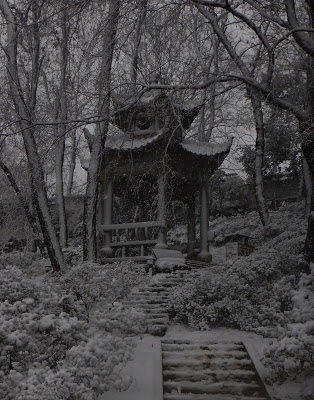It's really nice to have a little time to stop and look at the flowers.
Hothouse in the Botanical gardens. Outside, the tulips were up, but not blossoming.
Yesterday, a snowstorm hit. I had planned to go the Yellow Crane pagoda temple complex anyway.
The Yellow Crane Pavilion.
A peek inside.
Views from different levels.
Flowers interrupted.
Anyway, off to Changsha today.
Hothouse in the Botanical gardens. Outside, the tulips were up, but not blossoming.
Yesterday, a snowstorm hit. I had planned to go the Yellow Crane pagoda temple complex anyway.
The Yellow Crane Pavilion.
A peek inside.
Views from different levels.
Flowers interrupted.
Anyway, off to Changsha today.

















































